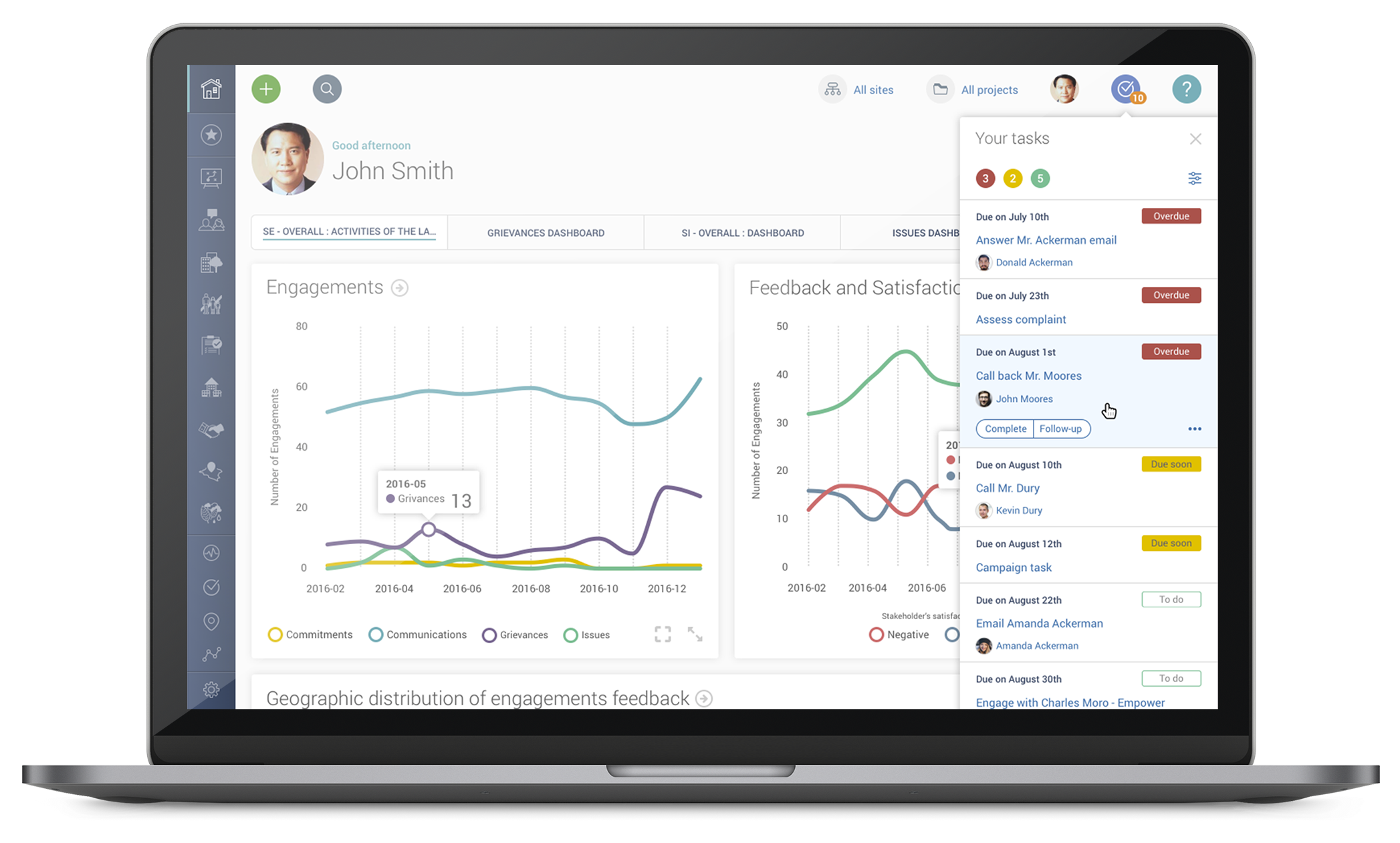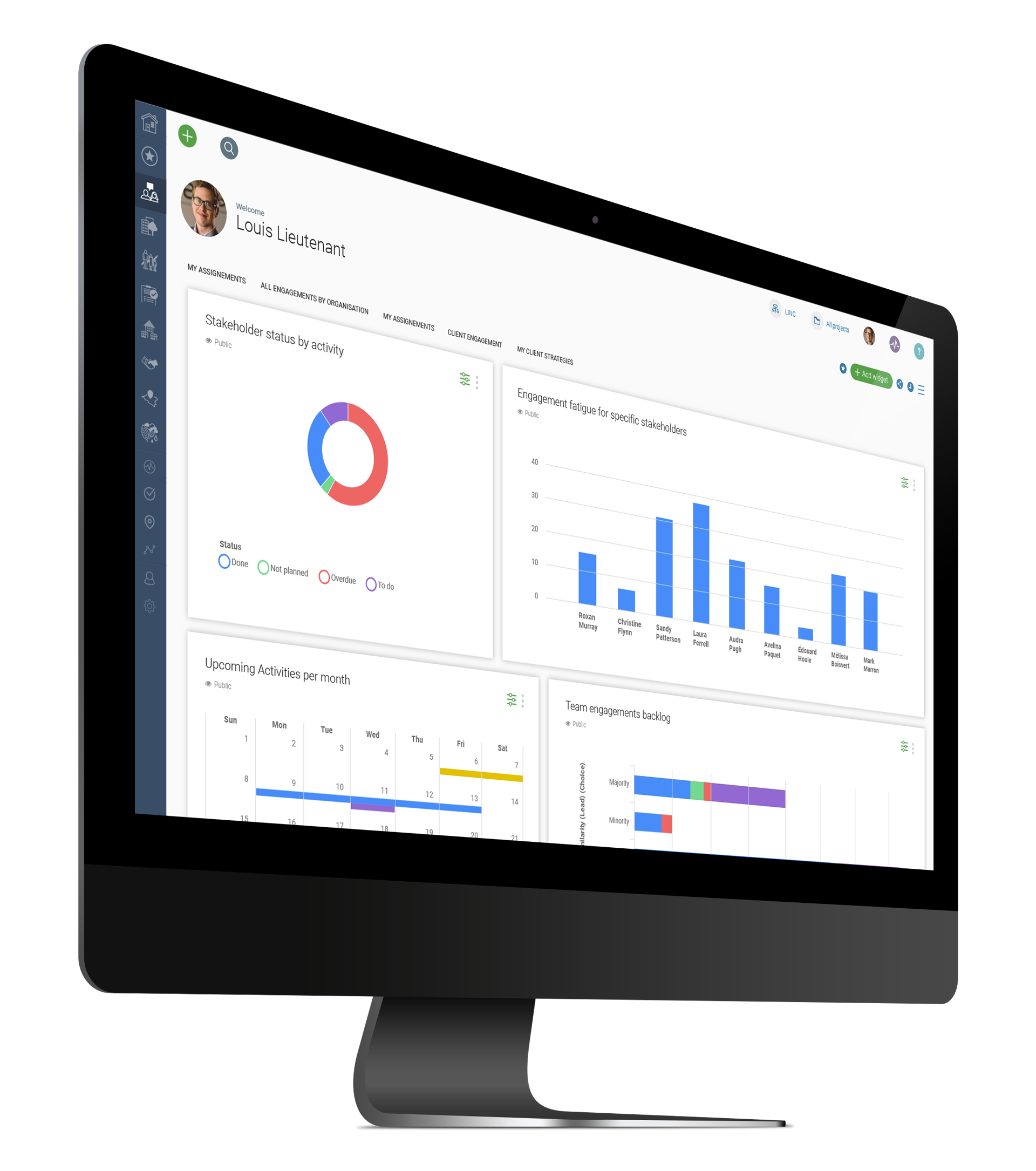Striking
Stakeholder
Engagement Gold
How an Australian mining company is using internationally recognized stakeholder engagement tools and methods to secure a social licence to operate.
Bringing responsible stakeholder engagement to mining in Myanmar
Mining is big business in Myanmar. The country boasts large deposits of jade, ruby, sapphire and diamonds, among other precious stones.
But Myanmar’s biggest mining export by far is copper, which attracts plenty of interest from foreign mining companies.
The mining industry in Myanmar has made significant strides in the last 20 years to improve its commitment to practicing responsible stakeholder engagement.
Such efforts create a win-win situation: securing social acceptance from local communities makes it easier for mining companies to obtain approval for their mining projects.
In turn, these mining projects stimulate long term economic development for the country by creating employment and new infrastructure.
Stepping up as an industry role model
PanAust is an Australian-headquartered copper and gold producer in Laos, with predevelopment and exploration opportunities in Laos, Papua New Guinea, Myanmar and Chile.
From an industry-wide perspective, PanAust has always practiced responsible stakeholder management. As a result, the company has generally enjoyed good stakeholder relations.
Early on, PanAust recognized the risks of not practicing stakeholder engagement: Local communities and other key stakeholders simply will not support your project. In the best-case scenario, failing to gain social acceptance means lots of time-consuming and expensive problems to deal with. In the worst case, it means a premature end to your project.
PanAust Facts
Corporate offices in
Brisbane, Australia
3300 employees
most working in Laos with a smaller number in Myanmar
Project
Obtaining exploration licenses in Myanmar
Industry
Copper and gold mining
PanAust in Papua New Guinea
Proposed Sepik Development Project for Frieda River would include four interdependent projects: Sepik Infrastructure Project, Frieda River Copper-Gold Project, Frieda River Hydroelectric Project, and Sepik Power Grid Project
PanAust in Laos
Two operations in northern Laos:
- Phu Kham Copper-Gold Operation
- Ban Houayxai Gold-Silver Operation
PanAust in Myanmar
- Joint venture with Myanmar Energy Resources Group International Company Limited (MERG)
- 90% interest in Wuntho Resources Company Limited (WRCL)
- WRCL holds tenements covering roughly 775 km2 in the Sagaing region of Myanmar
- PanAust has applied for additional exploration licences in the same region
Solution
Main challenge
Organizational challenges
“There’s a lot greater ease with which I can keep track of what people are doing. Maybe that doesn’t sound like a lot but actually, it’s quite a lot. It really does help.”
Jay Martin - External Affairs Manager at PanAust
Results
- All stakeholder engagement activities are being recorded
- All details of engagement activities are instantly accessible in a few clicks
- Stakeholder questions and concerns are being answered more quickly
- The activities of stakeholder engagement teams in the field are now easily tracked
Clear Stakeholder Engagement objectives
Given PanAust’s long track record for practicing responsible stakeholder management, its community relations team understands that mining projects are complex undertakings. It appreciates how hard it can be for local communities to fully grasp all the impacts and benefits of a proposed mining project — particularly when it comes to the early phases of prospecting and exploration.
As a result, PanAust’s primary objective for its stakeholder engagement efforts is to ensure all stakeholders understand what it is doing.
The team recognizes that a significant amount of education and face-to-face meetings will therefore be an inherent part of any mining project it initiates.
Once it has achieved this first objective, the team then focuses on its secondary objective: securing exploration tenements and hopefully convincing local people that this project can bring benefits to them. The team knows that this can only be achieved by demonstrating honesty, transparency and a willingness to listen.
“Stakeholder engagement is worthless if it’s not properly documented. Since using Boréalis, things have been much more organized and it’s far easier for me to keep track of what my teams in the field are actually doing.”
Jay Martin - External Affairs Manager at PanAust
Adopting the right mindset & tool to dig deeper
The PanAust team firmly believes that, as with all industries, mining companies in Myanmar should strive to always do better by its stakeholders. All it takes is a willingness to practice responsible stakeholder management and the adoption of internationally recognized tools and methods.
Taking a systematic approach to Stakeholder Engagement
Despite making every effort to practice responsible stakeholder management, inefficient work methods were slowing the day-to-day efforts of PanAust’s stakeholder engagement team in Myanmar. According to Jay Martin, PanAust’s External Affairs Manager in Myanmar, these inefficiencies were in large part due to its stakeholder engagement documentation, which he describes as “hit-or-miss” and “poorly organized”. This made systematizing engagement efforts and keeping track of documentation difficult.
The solution: an information management system designed for Stakeholder Management
It was around this time that PanAust’s then-general manager of external affairs, Glen Connell, approached Jay with the idea of having the Myanmar team use Boréalis stakeholder engagement software. The software was already being used for the company’s Sepik Development Project in Papua New Guinea with good results.
After hearing what the Papua New Guinea team was able to do with Boréalis, Jay was certain it would be a good tool for his Myanmar team. He quickly set about convincing the management team in Australia to give the Myanmar team access to Boréalis software as well.
Fast implementation
Head office agreed to Jay’s request and things moved quickly. Shortly after, Boréalis sent over Laura Portelance Jouvert – one of Boréalis’ top Business Analysts – for the better part of a week to train the Myanmar team on using the software.
Jay says that was more than enough time to get everyone up and running on using the system. From installation to initial rollout and implementation, everything went smoothly.
Boréalis @ PanAust Myanmar
- Boréalis applications: Stakeholder engagement software, with additional related Boréalis modules currently under consideration
- Implementation time: 2 weeks
- Staff training: 1 week
- Average use: 65 logins per month for 5-10 users
Smoother-than-expected change management
Jay says he went into the process expecting the hardest part would be convincing his colleagues to use Boréalis enculturating the software and ensuring that using the system would become a habit.
As it turns out, he says he needn’t worry. Right from the start, the team really liked using the software. Everyone with access to the system found that it was easy to log in to the software and enter whatever information they had to document – whether it’s updating a stakeholder’s contact information, entering the feedback from a community consultation session, or changing the status of a specific grievance.
“The faster you can respond to people’s concerns, the much happier they are with the project and the better they see that you are taking care of their concerns. Boréalis’ ability to put all the information you need right at your fingertips is a big plus.”
Jay Martin - External Affairs Manager at PanAust
Early gains
Improved efficiency
The biggest gain from implementing Boréalis stakeholder engagement software in Myanmar has been in the area of documentation. The Myanmar team can now respond to a stakeholder’s concerns while taking into account previous engagements.
Better stakeholder relations
Since Boréalis software gives instant access to information, it enables the team to establish more meaningful relations with key stakeholders. For example, Jay says he can now look up the details about a grievance or a villager’s question in just a few clicks and immediately address it.
Further gains
The Myanmar team has been using Boréalis software for less than a year now, and Jay predicts that these early gains are just the beginning.
The team currently uses the software for stakeholder engagement and compliance, but Jay feels it could one day be using the entire system, which includes a number of applications. Jay is already talking with PanAust’s IT team about adding Boréalis’ social baseline, social investment, and monitoring and evaluation modules.
At some point, he anticipates the team will need further training and support, as well as suggestions from the Boréalis team on how to make better use of the system.
Until then, Jay and his team will be on the field, diligently documenting in Boréalis their day-to-day efforts – and working hard to be positive role models for responsible stakeholder management in Myanmar.
“I’ve been pretty pleased with how heavily the system is being used by the guys in the field, despite the fact that English is not their first language.”
Jay Martin - External Affairs Manager at PanAust

Inspired by this great success story?
Start writing yours today!





